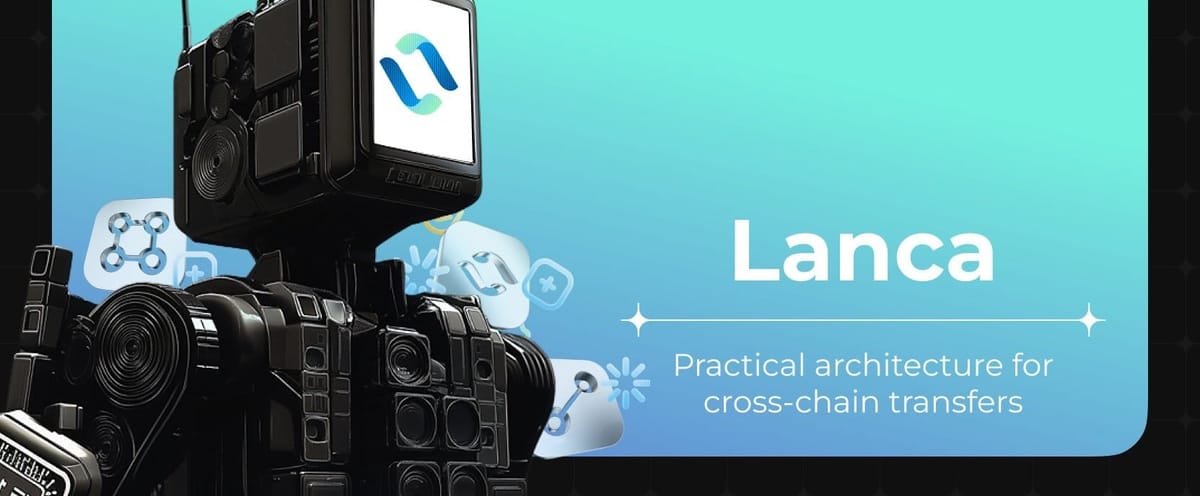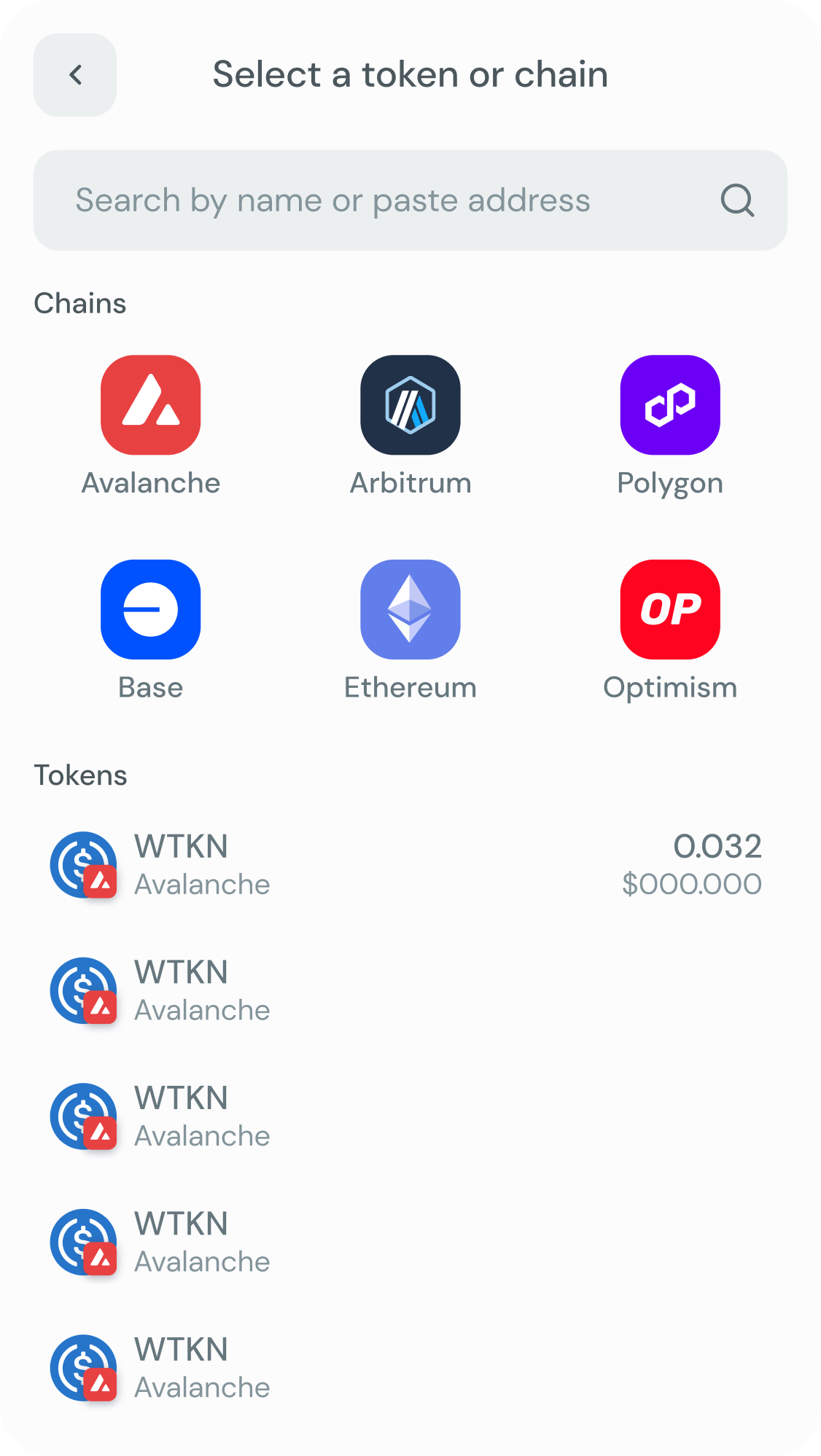Understanding Lanca Cross Bridge: A Gateway to Enhanced Connectivity

Introduction
In an increasingly interconnected world, the need for seamless data transfer and communication between different systems has never been more critical. Lanca Cross Bridge emerges as a pivotal technology designed to enhance connectivity across various platforms and applications. This article delves into the features, benefits, and future potential of Lanca Cross Bridge, illustrating its role as a transformative solution in the realm of data integration.
What is Lanca Cross Bridge?
Lanca's Cross-Chain Bridge is a decentralized infrastructure that allows users to seamlessly transfer assets between different blockchains. It removes the complexity of using multiple chains by providing a fast, secure, and user-friendly experience for bridging tokens.

Key Features of Lanca Cross-Chain Bridge:
1. Asset Transfer Across Chains
- Move tokens like USDC, ETH, or other supported assets between networks such as Ethereum, Arbitrum, Optimism, Polygon, and more.
- No need for centralized exchanges—everything happens on-chain.
2. Secure and Trust-Minimized
- Uses smart contracts and potentially decentralized relayer networks to verify transactions.
- Lanca doesn’t hold your funds directly; assets are locked and released in vaults or wrapped as needed.
3. Low Fees and Fast Settlements
- Designed to reduce the usual slippage and high gas fees seen in typical bridges.
- Settlement speed is optimized for fast confirmations across chains.
4. Composability
- DApps and protocols can integrate Lanca’s bridge into their workflows, enabling cross-chain liquidity, swaps, staking, or NFT transfers.
5. Multi-Asset Support
- Supports a variety of tokens and is built to be extensible for future assets and chains.
Benefits of Lanca Cross Bridge
The adoption of Lanca Cross Bridge offers numerous advantages for organizations looking to improve their connectivity:
- Enhanced Data Transfer Speeds: By optimizing data pathways, Lanca Cross Bridge significantly reduces latency, ensuring faster communication between systems.
- Improved Interoperability: Organizations can connect various applications and platforms without the need for extensive modifications, promoting a more cohesive IT environment.
- Scalability and Flexibility: As businesses grow and evolve, Lanca Cross Bridge can easily adapt to new requirements, making it a future-proof solution.
How Lanca Cross Bridge Works
Lanca's cross-chain bridge works by using liquidity pools, messaging relayers, and secure smart contracts to transfer assets between blockchains efficiently and safely. Here's a simplified breakdown of how it works

User Initiates a Cross-Chain Transfer
You start by selecting the token and source chain (e.g., USDC on Ethereum) and choosing the target chain (e.g., Arbitrum). You then approve and submit the transaction on Lanca’s interface.
Asset is Locked or Burned:
On the source chain, your token is either:
- Locked in a smart contract (if Lanca uses a lock-and-mint model), or
- Burned (if it's using a burn-and-mint system for wrapped tokens).
This ensures that the asset is removed from circulation on the original chain.
Validator/Relayer Notifies the Target Chain:
A decentralized relayer network or oracle layer (possibly Lanca’s own messaging mechanism) watches the source chain. When it sees the transaction confirmed, it sends a cryptographic proof to the destination chain.
Mint or Release on Target Chain:
On the destination chain, once the proof is verified:
- A wrapped version of the token is minted (e.g., lUSDC), or
- The token is released from a pre-existing liquidity vault on that chain.
🧠Intelligent Liquidity Routing (Optional Layer)
Lanca may optimize the path using intelligent routing algorithms matching trades across vaults to reduce fees and slippage. This makes transfers faster and cheaper, especially for large trades.
Security Layer
- Smart Contract Audits: Lanca's bridge contracts are audited to prevent exploits.
- Rate Limits: To mitigate risks from sudden spikes or suspicious activity.
- Multisig or Decentralized Governance: For managing upgrades or emergency pauses.
Use Cases and Applications
Lanca is a cross-chain liquidity and bridging protocol that supports seamless interoperability across multiple blockchain ecosystems. Some notable use cases include:
🔁 1. Cross-Chain Swaps
Lanca allows users to swap tokens across different blockchains without needing centralized exchanges. This means you can move assets like ETH, USDC, or native tokens from one chain to another (e.g., Ethereum to Arbitrum) with ease.
🧠 2. Intelligent Routing
Lanca uses smart routing to find the most efficient path for swaps using available liquidity across connected chains and pools. This ensures users get optimal rates while reducing slippage.
📦 3. Omnichain Liquidity Provision
Liquidity providers can supply assets to vaults on multiple chains and earn yield from cross-chain trading fees, enabling passive income opportunities across the ecosystem.
🛡️ 4. Secure Bridging Infrastructure
Lanca’s bridge infrastructure ensures that users can transfer assets securely between networks with built-in safety checks and decentralized validators.
🧰 5. SDK and API for Developers
Lanca offers tools (SDKs, APIs) that allow developers to integrate its cross-chain functions into dApps, wallets, and protocols. This fosters broader adoption and interoperability for builders.
💡 6. Support for Ecosystem Tokens
Projects can plug into Lanca to make their tokens bridgeable and usable across multiple chains, improving utility, accessibility, and composability.
Future of Lanca Cross Bridge
As technology continues to evolve, so does Lanca Cross Bridge. Upcoming features and enhancements are expected to include:
- AI Integration: Leveraging artificial intelligence to analyze data flows and optimize connectivity further.
- Expanded Compatibility: Continuous updates to ensure compatibility with emerging technologies and platforms.
- Enhanced User Experience: Ongoing improvements to the user interface to simplify the integration process for developers.
Why It Matters:
Lanca’s cross-chain bridge is a crucial piece of infrastructure for multi-chain DeFi. It allows liquidity to move freely across ecosystems breaking the isolation of blockchains and making apps more interconnected and usable.
Conclusion
Lanca Cross Bridge represents a significant advancement in the field of connectivity, offering organizations a powerful tool to enhance their data integration capabilities. By facilitating seamless communication between disparate systems, Lanca Cross Bridge not only improves operational efficiency but also positions businesses for future growth. As the demand for interconnected solutions continues to rise, adopting technologies like Lanca Cross Bridge will be crucial for organizations looking to stay competitive in a rapidly changing landscape. Embracing this technology could be the key to unlocking new opportunities and driving innovation in various industries.
Useful Links



Comments ()